
SHAH ALAM: MPA and MALE UAVs out for tender. The Defence Ministry has published advertisements on the international tender process for two maritime patrol aircraft (MPA) and three MALE UAVs in two local newspapers yesterday. The advertisements were published in the NST and Berita Harian.
The advertisements stated that local bidders for both tenders must have a letter of authorisation from the original equipment manufacturer or systems provider/integrator for the purpose of buying the tender documents.
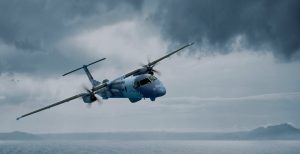
The tender document for the MPA will only be available for purchase on 1 September and the MALE UAV on 3 September from the Defence Ministry tender division. The closing date for submitting the MPA tender is 3 December and the MALE UAV is 26 November.
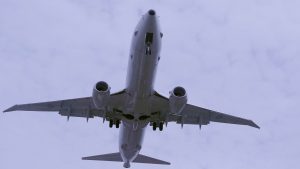
Based on the above requirements so far I will not make a guess on how many bidders will take in both tenders. As the aspirants only need an authorisation letter to be able to bid for both tenders, the numbers could go up to two dozens for each. OEMs in the past had given the authorisation to two or even three companies to present them in previous tender exercises so the number of companies could be much higher than the number of platforms being marketed or offered in the past.
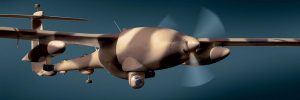
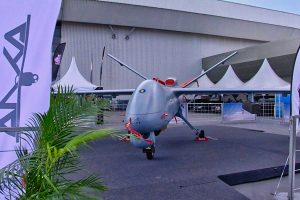
Even if the tender documents are not yet published, I hazard to guess that companies that did not respond to the RFI previously could also be involved in these tender exercise.
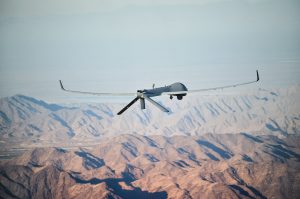
It must be noted that the tender exercise does not necessarily mean that RMAF will get their MPAs and MALE UAVs within the next three years. And its not just technical or regulation issues, the current economic situation will probably see the procurement processes be stretched much longer as had happened in the past.
— Malaysian Defence


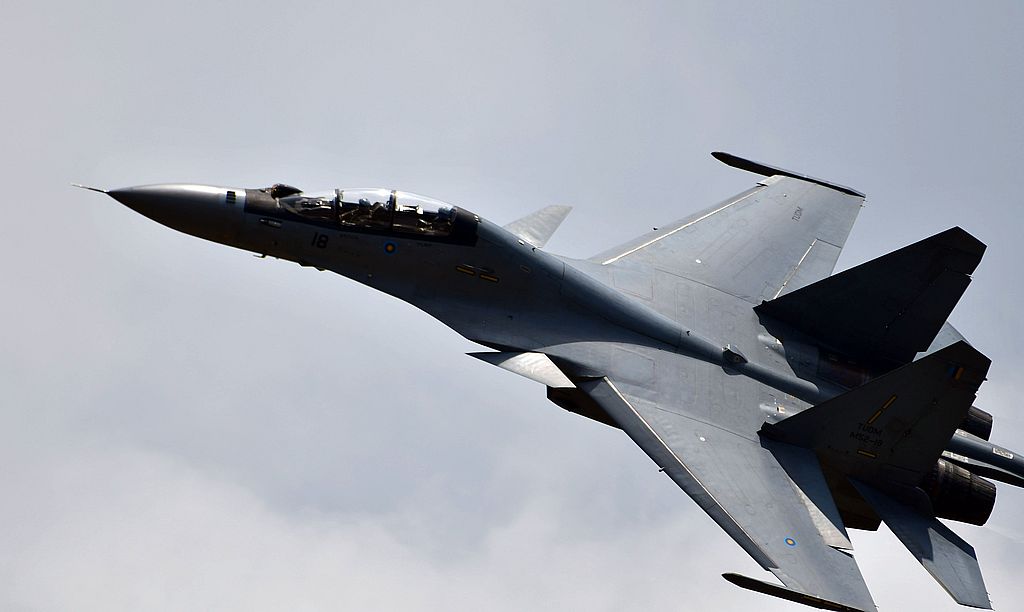
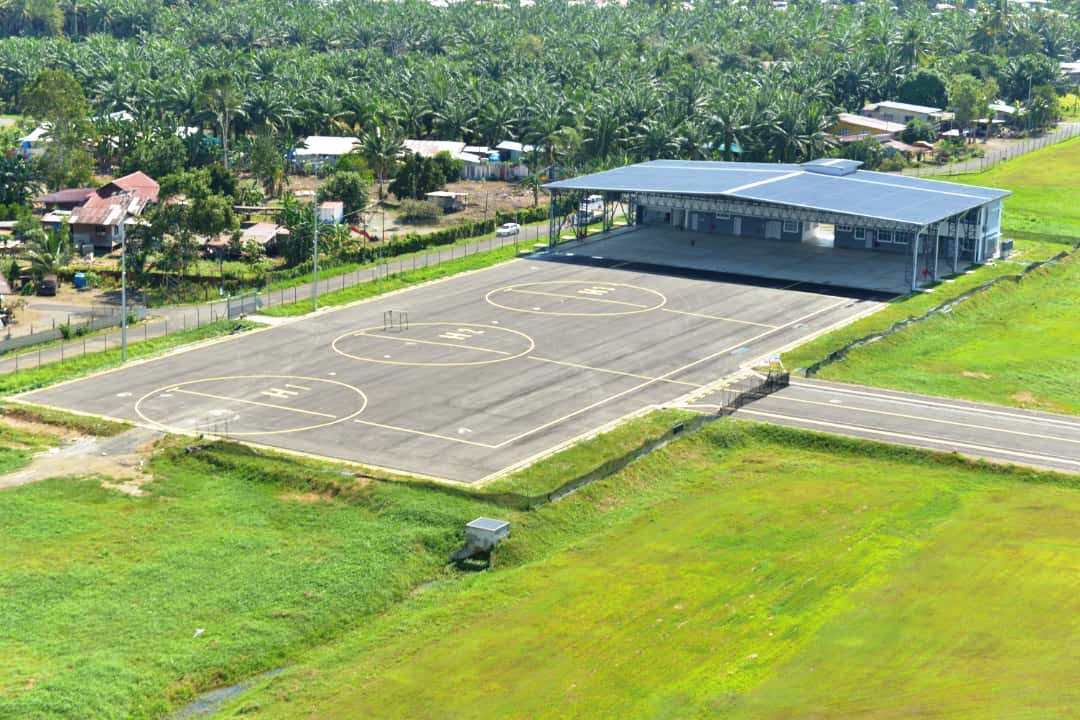
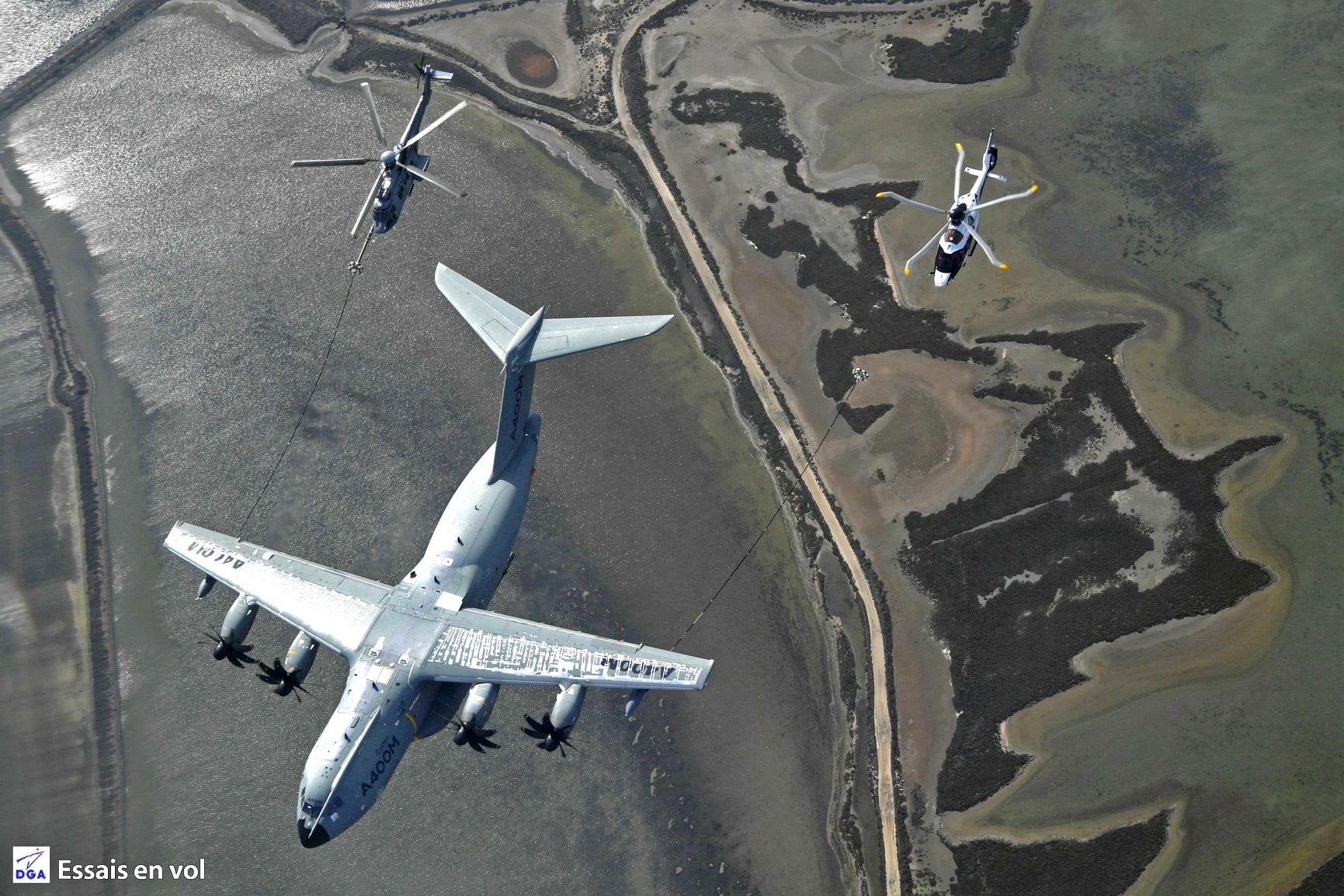
Hope we will not mess this up too..how about the tender for 3 maritime utility helis that out last year? Saw aw139 appeared kd rajawali’s wall..i guess rmn have chosen the aw139 by the looks of it
Ok, good news. Hope the best will be choose.
With our current predicament and budget crunch, I am against buying a brand new MPA, and would prefer if we convert our existing CN-235 with USA MSI grant plus our own budget for MPA. We cannot afford to operate 2 different MPAs in TUDM. That can be complemented by MMEA getting its own additional MPAs too, probably in the shape of King Air B200 equipped with COTS equipment to lower the cost.
As for UAV MALE, rather than having an open tender, I would prefer a G to G deal for the Bayraktar TB2. Turkey sold 12 drones and three ground command centers to Ukraine for $69 million. That cost is IMO totally affordable for us.
http://english.iswnews.com/wp-content/uploads/2020/05/%D9%BE%D9%87%D9%BE%D8%A7%D8%AF-%D8%A8%DB%8C%D8%B1%D9%82%D8%AF%D8%A7%D8%B1-Bayraktar-TB2-en.jpg
http://idsb.tmgrup.com.tr/ly/uploads/images/2020/03/05/23825.jpg
http://pbs.twimg.com/media/DY-vZouW0AAY1pU.jpg
Buying in penny packets. We can only hope there will be more to come, and that they will come soon enough for it to make sense to buy the same model.
MPA tender
http://pbs.twimg.com/media/EgOfQs0U4AAGB3p.jpg
Looks like it is for 2 MPA aircrafts.
MALE UAS Tender
http://pbs.twimg.com/media/EgOfQs0UEAA09U2.jpg
It is for 3 units. Does this mean 3 UAS systems, or actually 3 MALE UAS (which is usually considered as just 1 system)?
Repl
2 MPA and 3 MALE UAVs, its in the first paragraph.
So, IMHO based on the priority and the recent news lately including budget approval and tender issued I think these following procurement will take place ASAP (but its still depends on various factors) :
1) 2 MPA for RMAF
2) 3 UAV for RMAF
3) 2 MRSS/LPD/LHD for RMN
4) 3 maritime helicopter for RMN
CMIIW
This 2 new MPA procurement is the different program from the 2 existing CN-235 conversion to MPA under US MSI initiative right?
Reply
Yes those CN235s will be MSA only
……,
I Dissagree, Sometime it is better to buy brand New rather than Upgrade the CN-255.
Now We Hope Goverment To choose MPA like Kawasaki P1 or Swordfish, poseidon Might be too Advance for us.
For MALE UAV, Let’s just hope Anka and Predator is choosen !.
Again with the local companies bidding on behalf of international makers as if they are so incapabled that they needed our ‘help’ in the bid, the same shenanigans as the RFI from the previous Government too.
Naw, we will never learn and doomed to repeat the same mistakes lah. Rinse and repeat.
@…
I got another alternative. Since the current TUDM B200T are with MPA gear, we could buy new CN-235 and PT could port the AMASCOS stuff into the new airframes as they are doing for our US sponsored MPAs. The B200Ts could revert as fast transports to short airstrips for TUDM or sold off. IMHO the MPA role & responsibilities should be solely under TLDM purview. They ady have a rotary air division, so they can simply expanded to include fixed wing rotary airplanes. That way, TUDM can offload their maritime patrolling duties and focused on securing our airspace & offensive power deterrence.
….
Issues associated with having 2 different MPAs can be mitigated to an extent if both share a common mission suite.
.
AM,
Yes again in penny packets – 2 aircraft; another “a bit of everything but not enough of anything” situation.
In line with long-standing policy the deals are via local companies. Whether these actually add any value is the question
Whatever MPA is chosen ideally it will have mix RMAF/RMN sensor crews – we need more “jointness” especially given that resources are tight. As for the UAS I couldn’t care less what’s ordered as long as we have a right C2 set up which is not encumbered with service centric and bureaucratic issues.
@ Safran
Buying brand new means less money for other things.
We have not talked about LCA. Not talked about Nuri replacements.
Getting expensive MPA like P-1, or UAV like Anka will blow our budgets. Predator is no longer built.
Just 2 MPA and 3 UAV is too little for our needs.
@ marhalim
CN-235 can be equipped as a MPA. I rather have 6 CN-235 MPA rather than just 2 of other types of MPA. The MSI budget is for MSA equipment for 2 aircraft (and probably additional 2 later), but we can always put in our own budget to increase the specification of the aircraft to MPA standards, and to convert additional aircraft.
C295 would be a better choice but it’s relies heavily on israeli made avionics so no way it’s going to happen.
I personally would prefer ATR72 as the main platform due its large commercial footprint in Malaysia but in the end of the day, it’s all about the subsystems
… – “Predator is no longer built.””
And was notoriously expensive to operate/support.
The Turks make decent UASs. They’ve also matured as a user; to the extent where UASs have been integrated into an effective strike:recce capability; enabling targets detected by UASs to be engaged by F-16s in minutes. Prior to that the Turks faced a problem common to most or all new users; the inability to act on intel obtained by UASs in a manner due to a lack of coordination.
The question is which UAS comes closest to meeting our requirements and the level of politics which will determine selection.
Dundun – “ in the end of the day, it’s all about the subsystems”
We need a platform which won’t cost an arm and leg to support; one fitted with a mission suite which will suit our needs for years to come and whose use is well coordinated/integrated with other assets we have.
Hope it wont be screwed up in the LCS, the 6 armoured vehicles for the UN n the unclaimed damages for late delivery of the SU.
IF Any more screw up occurs thats too many failures
Just a query, can the US sponsored MSA planes be upgraded to MPA (ie carryout ASW missions) later on? Or USA specifically demands that it cannot be weaponised?
Reply
No but it depends on the requirements of RMAF. If they really think that the CN-235 will be good enough for MPA it certainly begs the question why they are opening a competition to buy one or in this case two. Whether or not it is wise with our finances is the one billion question.
My comments are:
1. Lets see how many will enter the bid, looking at recent cases…..hmmmmm
2. No bidding is needed. Lets make it simple. There are 2 CNs upgraded to MPA. If there is a need for brand new platform for additional MPA so CN 235 should be the winner.
3. Dont expect too much.
There is no need for P8 Poseidon or high-end MALE UAV as there was no need for A400s. This is just a game someone played as if there is/was a need for a gold plated platform.
4. There is no need for local partner, buy directly G to G
5. Last but not least Hope the money already provided
@romeo
1. Don’t count chickens unless delivered and operational, that’s my experience watching Malaysia.
2. There’ll always be bidding. Loooong process.
3. Someone will always push for a high end platform, naively thinking “this time it’s different”, and the someone will have huge grassroots support from the “ATM stronk, Msia boleh” crowd
4. There will always be a local partner
5. Refer 1. Got money also can be taken away.
Romeo – “There is no need for P8 Poseidon or high-end MALE UAV as there was no need for A400s”
Not exactly. 2 different things.
There was no need for A400Ms because at we had sufficient transports in the form of Charlie’s and CN-235s – both were relatively young. It was taken for granted that we’d eventually order “Js” and that we didn’t need something larger.
The problem with having A400Ms for us is that unlike other arms we don’t regularly lift large loads over long distances and that most of the time even the Charlies don’t fly with a maximum load.
With the P-8 we simply don’t need range and endurance it enables because if our operational requirements and operating costs. I have no idea what you mean by a “high end” MALE UAS as they are all pretty sophisticated by virtue of being MALES but we need something with a decent range and endurance and something that doesn’t cost an arm and leg to run.
Romeo – “
Of course but it’s long standing policy to do so using the excuse or illusion that doing so leads to long term tangible benefits. To do away with this practice will have political implications but it has to be done as part of a complete and fundamental revamp of how we conduct defence.
The vast majority of local companies have essentially been no more than “middlemen”: offering no added value and being granted a licence to make money.
“why they are opening a competition to buy”
I’m not sure but isn’t tendering to buy is needed to be done regardless of their preferences in view of transparency or perhaps a RFP is sufficient nowadays?
The more pertinent question is what are TUDM requirements in the tender, because from there we can postulate what are the likely available carrying aircraft they will consider and what kind of armaments they will have.
@ marhalim
” the CN-235 will be good enough for MPA it certainly begs the question why they are opening a competition to buy one or in this case two ”
They are plenty of things we do that beggars belief. It is not a matter of good enough or not. It is a matter of getting them in adequate numbers to sufficiently perform the mission.
What is the use of having a great MPA but in inadequate numbers (just 2) to perform the mission? Also we as a user cannot afford to have 2 different MPA types in our inventory.
Then there is the need to juggle our budget with our needs. Buying the best in penny packets isnt going to make things better. We we need to get our equipment in numbers for them to be operationally effective.
We need to get everything, medium helis, MPAs, MALE UAVS, LCA/LIFT, AWACS in meaningful numbers. That means juggling between picking the best, adequate enough for the function, used etc. to provide us the capability.
https://www.malaysiandefence.com/options-for-rmaf-cap-55/
Maybe should just buy LM SC-130J Sea Hercules.
Use the sea hercules as MPA and tactical transport.
Killing 2 birds with 1 stone. New MPA with old hercules replacement.
In long term, just buy 14 maybe. 7 in peninsular and 7 in borneo. Do a rotation of duty where on a daily basis, 1 will be tasked for MPA, 2 will be in maintenance, the other 3 in training and transport duties.
Or an alternative way, upgrade the old hercules with MPA kit same like sea hercules. When the airframe needs replacement, just buy new c-130j airframe. The kit (maritime radar, eo/ir, MAD, palletized asw mission system) just transfer to new airframe.
Plus the old herc’s crew can easily transitions to c130j compared to another airframe just for mpa. So more streamline pipeline for training i believe.
We already have airod to support maintenance. Plus more job security for airod.
For the cn235, just upgrade all to MSA and transfer to MMEA.
Just my sekupang.
@ Nihd
Can we afford to fly the C-130H everyday for 8 hours at a time?
Based on US Coast Guard HC-144A maritime patrol aircraft (a version of the CN-235MPA), the cost per flight hour is USD3,275.
C-130H cost is around USD10k per hour.
If we buy 14 C-130J we are not going to have money for anything else up to 2030. So no LCA/LIFT, no AWACS, no Nuri replacements, no anything.
http://www.dsca.mil/major-arms-sales/india-c-130j-aircraft
As for the conversion of CN-235 to MPAs.
This is the cost for our beechcraft conversion to AMASCOS
” AIROD’s Head of International Programme Gooi Boon San said Thales will be supplying the Airborne Maritime Situation Control System (AMASCOS) and AIROD will modify the aircraft and install the system.
“The complete system consists of a tactical command system, one Master Search Radar and one Forward-Looking Infra-Red system. Each aircraft will cost around US$4 million,” he told reporters after signing the agreement with Thales Director of Mission Airborne Solutions in the Aerospace Division, Jean Francois Henrio at AIROD’s headquarters here. ”
We can get a really decent CN-235 MPA with the MSI grant plus additional budget (say USD40 mil) and trading in our current B200T MPA to PTDI.
For our maritime surveillance, we need to have eyes in the air basically at 4 locations
1) melacca straits and andaman sea approaches
2) off east coast of peninsular
3) off sarawak and kota kinabalu
4) esscom areas
To cover the areas, IMO we need a minimum of
6x CN-235MPA (TUDM) to cover 2 long range areas (1+2)
6x beechcraft B200 MPA (MMEA) to cover 3 near shore areas (1+2+4).
12x Scaneagle UAV (TLDM) to cover near shore areas (3+4), plus operations from TLDM Frigates and auxillary ships.
Fulmar UAV (MMEA) extending the coverage of mmea patrol vessels
12x MALE UAV Bayraktar TB2 (TUDM) to cover long range areas (3+4)
http://2.bp.blogspot.com/-zBhypDcZ18w/WPtidAZYNWI/AAAAAAAAy2E/PVuJhCg_uroYeVIxR2ZZ-k90vA75mT6yACLcB/s1600/Marco%2BPapa.jpg
@Nihd
I had suggested on Herc conversion before, we have plenty of them after all, but was shot down by commenters here on the basis of higher operating cost, which is no surprise since its 4 engined but OTOH with greater range and loiter time – something that is necessary for MPAs. Anyhow, CN235 or ATR72 might seem more reasonable but I don’t know how suitable they are without knowing the range & loiter time requirements of this TUDM tender or if it might be equipped with air refueling gear.
Nihd,
Years ago the RMAF had looked at and was offered the possibility of upgrading existing Charlie’s or acquiring new/surplus ones for the MPA role. For a number of reasons – including operating costs – it was decided not to.
Transferring the CNs to the MMEA will take time as the MMEA at the moment neither has the pilots and ground crew; nor the support/training facilities. The MMEA’s operating budget will also have to be significantly increased.
If indeed the RMAF intends to carry out what was outlined in the CAP 55 and do away with the CNs for the transport role; the most logical move would be to convert the whole fleet of 6 into MPAs. There is also the sole surviving VIP configured CN which is owned by the PM’s Department.
P.S.
For our operational requirements something like a CN or ATR has more than sufficient range and endurance. It’s not as if we intend on conducting missions as far westwards as the Indian Ocean or far eastwards as the Western Pacific. Both types also have sufficient internal volume and lid capacity for the things we need to do.
@ Azlan
” If indeed the RMAF intends to carry out what was outlined in the CAP 55 and do away with the CNs for the transport role; the most logical move would be to convert the whole fleet of 6 into MPAs. ”
Yes, that should be the most logical way to do it. But stranger things have happened.
If it is up to me (and if I dont care about the reality of the situation and those CN-235s), I would love to have the RAS-72 MPA like the one that Pakistan Navy got right now, the RAS-72 Sea Eagle
http://pbs.twimg.com/media/ENbj3rLWwAAaHTt.jpg
http://specialmission.ras.de/the-ras72/
But we already have the CN-235, and with CAP55 plan we dont need them for transport missions. So the best thing to do with them is to convert all 6 CN-235-220 into MPAs with the best possible fit out that we could afford.
– AESA maritime search radar
– SATCOM antennas
– Datalinks
– ViDAR
– sonobouy launcher
– MAD XR
– AIS
– air refueling probes
– DIRCM
With MAD boom
http://1.bp.blogspot.com/-_aOBpgDBhHM/XtSt3ZjPYbI/AAAAAAABMto/8DKs2dtaHbwb00Nu8IwYQSDLYHd3AHTiwCLcBGAsYHQ/s1600/2015082901104889533.jpg
https://3.bp.blogspot.com/_peANiFS0ObM/TFe1lRGIy0I/AAAAAAAABhw/v2GpV4sH9PA/s1600/CN+235+ANTI+SUBMARINE.jpg
https://www.itamilradar.com/wp-content/uploads/2019/12/DYugSMdXcAA5etc.jpg
Air refuelling probe (designed for C-295 but can be fitted to CN-235 as the fuselage is similar)
http://www.aircraftcovers.com/media/images/12369.jpg
Stub wing already designed for CN-235, can be used to carry torpedoes instead of hanging it high on the wings.
http://4.bp.blogspot.com/-xk8F_GRdUNM/WvqT945Iu9I/AAAAAAAAXgg/lNWAQ6L6St03Lleiz-klUAQ9E2QRLIdPQCK4BGAYYCw/s1600/20180516_03.jpg
As for the range, the CN-235 in MPA role has a range of 2,100nm and 10+ hours of endurance.
http://www.dcms.uscg.mil/Portals/10/CG-9/Acquisition%20PDFs/Factsheets/HC-144.pdf
Chua – “. There will always be a local partner”
Not “always”. Certain – smaller deals – don’t require a local partner and involves MINDEF and the OEM. Buying certain things from the U.S. also – either via FMS or as a direct commercial sale – doesn’t involve a local partner.
Chua – “5. Refer 1. Got money also can be taken away”
To be fair this happens everywhere. The problem here is the constant shifting of priorities on the part of the government; something which was a priority being downgraded because something else has been declared a priority. Inevitable given the huge shopping list, limited funds and our inability or unwillingness to have continuity.
The good thing is that the requirement for MPAs and UASs which were approved by the previous government is proceeding under the present one. Unfortunately in ridiculously low numbers however.
… – “6 CN-235-220 into MPAs with the best possible fit out that we could afford”
I would say the “most capable” in line with our requirements rather than the “best”. Given that it has sufficient range and endurance for out needs; an air to air refuelling capability will not be a requirement.
Adding a self defence suite and provision for a ASW capability (whether MAD or sonobuoys) will significantly drive up costs. It’s just something (like various other things) that we’ll have to do without for the time being.
For me of far greater importance will be the ability of the MPA to “talk” to other RMN assets (i.e. informing the nearest RMN ship a surface contact has been detected or detecting from the sail of the sub in very shallow waters and getting the info to those who need it) and also the MMEA. We also have to be able to coordinate the use of UASs with the MPAs; both complementing each other with no overlap. There shouldn’t be specific areas only covered respectively by MPAs and UASs – no the ideal way of utlilising resources.
Interservice parochialism is still and issue as is the actual ability for the different services to work together. We still have a long was to go towards achieving “jointness” which is an absolute must. Granted the MPA is a RMAF asset but the RMN should have a level of say in tastings and sensor crews should include RMN people.
Any indication so far as to who will operate the prospective MPAs and UAVs?
Azlan “Adding a self defence suite and provision for a ASW capability (whether MAD or sonobuoys) will significantly drive up costs. It’s just something (like various other things) that we’ll have to do without for the time being. ”
Agreed. As with any asset, there is always going to be a trade off between the capabilities we acquire and the other things we can do with the cash- whether acquiring the asset in greater numbers or something else altogether. Faced with a situation in which we have very limited MPA assets and budgetary resources, acquiring ASW capability and other things is arguably gold-plating.
romeo “There is no need for P8 Poseidon or high-end MALE UAV as there was no need for A400s. This is just a game someone played as if there is/was a need for a gold plated platform.”
As has been explained by others, the A400Ms are a rather extravagant way to go about our business. MALE UAVs however can be an economical way to go about it -within the limits of their capabilities- and also represent a field which we currently have no participation, which is long overdue. It will take time not only to learn to operate and employ UAVs but as Azlan said, to institutionalise good practices and organisational arrangements so that they can be most effective way.
… “As for the range, the CN-235 in MPA role has a range of 2,100nm and 10+ hours of endurance.”
Yes but this refers to the USCG’s relatively light configuration. To add the MAD gear and armaments you listed -not that I’m advocating it- will cut these figures significantly.
AM – “Any indication so far as to who will operate the prospective MPAs and UAVs?”
The RMAF.
Which is why it’s important the the RMN has a say in taskings and there be mix RMAF/RMN
crews. Also for the need for the MPAs to operate seamlessly with RMN assets. Real “jointness” including the ability of assets of various services to work together and communicate is still an issue. There must also be a mechanism in place for the MPA to coordinate ops and share things in a timely manner with the MMEA.
The UASs will be a RMAF asset but as we mature as a UAS user in the coming years, MALEs should be operated by a tri service “UAS/UAV Command”. This way the capability is not hogged by any one service and we get the info/data to those who need it in a timely manner with no bureaucratic delay – “jointness”.
@ AM
” Yes but this refers to the USCG’s relatively light configuration. To add the MAD gear and armaments you listed -not that I’m advocating it- will cut these figures significantly ”
Of course.
Thats why i talk about the refueling probe.
But anything more than 8 hours is taxing for the crews anyway.
Right now the latest MAD probe like the MAD-XR is very small, it can even be carried by UAVs. Its basically 15x smaller than something on the P-3s for example, weighing just 1.5kg. So while current MAD systems are big and bulky (like those installed in the current turkish CN-235 ASW), future systems are lightweight enough not to significantly impact the performance of the aircraft.
http://www.cae.com/media/media-center/documents/datasheet.MAD-XR.pdf
@ azlan
What can be done is to have embedded TLDM liaison officers inside TUDM squadrons, and to have TUDM liaison officers on board large TLDM ships like Frigates and MRSS. Exchange programs for Sensor officers of MPA and Lynx helicopters, and UAV operators should also be done.
@ AM
” Faced with a situation in which we have very limited MPA assets and budgetary resources, acquiring ASW capability and other things is arguably gold-plating ”
IMO even this tender for 2 new MPAs instead of using the same budget in putting an all out effort to convert 6 CN-235-200 into a capable MPA is arguably gold-plating.
….
Yes there are many things that should/ that can be done. At a higher level there must be a will and the incentive to achieve real “jointness” – not easy given that each service has to justify and compete for funding and that each has its own way of doing things. “Joint” HQs must be staffed with the right people; rather than people there merely as part of the process of career advancement or placed there because their career has reached a dead end.
To be fair even in militaries that got into the “jointness” business way before us; there are still service centric parochial issues at play.
… – “6 CN-235-200 into a capable MPA is arguably gold-plating””
My guess is that like other things in the CAP 55 (and stuff with the RMN in the 5/15); the announcement that the CNs would eventually be retired and not replaced by another light transport is something the RMAF is willing to do to reduce expenditure but something it wouldn’t like to unless left with no alternative.
A possibility also that (like the 5/15 which sees costs savings achieved by retiring certain aged assets) the RMAF saw retiring the CNs as a way to free up funds which could be diverted elsewhere.
Ultimately neither the 5/15 or CAP 55 are written in stone or were considered by the respective services to be actually achievable. Both were driven by funding issues; as well as politics. Just like how the 5/15 to all intents id no longer the 5/15; CAP 55 as we know it will evolve.
AM – “To add the MAD gear and armaments you listed -not that I’m advocating it- will cut these figures significantly.”
What will really add to the weight will be torps, missiles and sonobuoys. We must also add in the associated equipment. A problem faced by all platforms; more so for smaller ones like the
Beechcraft and Lynx.
The good news us is that geography and operational requirements don’t require MPAs to far to where they need to be.
@ azlan
Yes you could just retire the CN-235. But that would still not get you the logical number of MPAs you need to cover the maritime area of malaysia, with the current budget that we have.
Surely the budget that is required and approved for 2 brand new MPAs would be more than enough to convert 6 CN-235 into MPAs. But why is that not be the 1st choice? Why does the military still agree to buying in penny packets?
Another issue for me with both the 15/5 and CAP55. There is basically no justification explained for their ToE. Why do they need the 18 OPV on top of 12 LCS? Can we afford and make do with just 2 types of fighter?
…. – “Yes you could just retire the CN-235”
Part of the reason could have been that funds saved from the upkeep of the CNs could have been channeled to other areas – a worst case scenario.
… – “why is that not be the 1st choice?”
I have given plausible possible reasons – the same reasons behind the 5/15.
…. – “Why does the military still agree to buying in penny packets”
Who said anything about the military “agreeing” to anything or for that matter the military”’ opinion even counting for anything?
The military lays out its requirements; plus the numbers and time frame. First MINDEF approves the requirement and it’s submitted to the next level – the Finance Ministry and PM’s Economic Planning Unit. They then decide whether or not to proceed with the purchase and the numbers.
…. – “There is basically no justification explained for their ToE”
“No justification” for some of us maybe but from the viewpoint of the end user – who factors things we don’t – there is justification.
Both the 5/15 and CAP were plans driven by the worst case scenario in which funds remain extremely tight in the coming years. Both were also intended for PR and were heavily driven by political factors; which is why I’ve never taken both plans seriously and why – together with certain factors – I predicted that both would die natural deaths. It’s for the sane reason why the White Paper didn’t excite me – it didn’t contain anything we didn’t already know and was very political; not only in what was mentioned but in also what wasn’t.
…. – “Why do they need the 18 OPV on top of 12 LCS”
Again – because the LCSs and other frigates are deal with high level threats; lower level threats being the responsibility of the Kedahs and LMSs. Same reason the RMAF desires a high/low end mix.
Although designated as “OPVs” the designation really doesn’t reflect their roles as in addition to peacetime constabulary roles (until the MMEA can fully take oner) the Kedahs from Day One were expected to also have a wartime role; reflected in the fit out (i.e. the TRS-3D, “obstacle avoidance (read “mine” sonar, Super Rapid) and the space for 3 Exocets and RAM – stuff they wouldn’t need if indeed they were intended to be utilised only as “OPVs”.
… – “Can we afford and make do with just 2 types of fighter””
The question is really not whether we can “afford” but whether we “should” … There is a reason that other air arms with much more resources than us are doing so.
To reduce our logistical/support footprint; we should. We simply don’t have the resources (either in cash, manpower or things) to adequately sustain more than that.
@…
IMHO the MPA role should just be delegated to TLDM responsibility. Cuts out all the interservice redtape crap. They already have rotary airwing service, it can easily be expanded to cover fixed wing rotary aircraft ie the MPA.
@ azlan
” Although designated as “OPVs” the designation really doesn’t reflect their roles as in addition to peacetime constabulary roles (until the MMEA can fully take oner) the Kedahs from Day One were expected to also have a wartime role; reflected in the fit out (i.e. the TRS-3D, “obstacle avoidance (read “mine” sonar, Super Rapid) and the space for 3 Exocets and RAM – stuff they wouldn’t need if indeed they were intended to be utilised only as “OPVs”. ”
That was the Kedah class before 15 to 5.
There is no way the 18 OPVs in 15 to 5 will be exactly armed and FFBNW like the current Kedah class. From what we see it will be a kosong ship with just a fully navalized hull.
So why do they need 18 of those? 18 OPV +12 Frigate is 30 large ships. Can we even afford to run that many large ships on top of 20 OPV in MMEA?
Can malaysia afford to run 50 large ships in its maritime fleet?
Can malaysia afford to run 50 large ships in its maritime fleet?
Actually the number 50 is just smokescreen. What they want maybe 25 or less.
…. – “was the Kedah class before 15 to 5”
No ….
I have actually asked around. The intention (if indeed follow on Kedahs are bought – I think not) is to have the same radar and to fully fit them out in order for them to perform the roles envisaged ..
…. – “There is no way the 18 OPVs in 15 to 5 will be exactly armed and FFBNW like the current Kedah class”
As I explained; the 5/15 is not written in stone/holy writ – the RMN is under no illusions that the plan will be implemented. The 5/15 was driven by political factors; it was a big compromise if funds continued to be scarce for an indefinite period.
Just because the plan mentioned 12 LCCs and “x” number follow Kedahs doesn’t mean planners actually thought it was implementable. The plan set out the long term force structure of the RMN and it was merely a plan; you need to see it for what it is/was; a plan – it has already as good as died a natural death.
If indeed bought follow Kedahs (the RMN knows that most 6 will be ordered) are intended to perform various roles and if they are not fully fitted out (modestly given their roles) it has no intention of going through with it.
… – “So why do they need 18 of those? 18 OPV +12 Frigate is 30 large ships”
Why do they need 12 LCSs and “x” LMSs? Why does the MMEA need 20 OPVs? Why does the RMN see a need for a minimum of 4 MPSSs? The questions can go on if you want to approach it from that angle.
Obviously the number wasn’t plucked out of a hat but based in the ideal number of ships needed to maintain both peacetime and possible wartime scenarios. A number that both organisations knew they’d be able to sustain in the long run if certain conditions were met. It was the “ideal” number but like everything else remains uncertain.
… – “. Can we even afford to run that many large ships on top of 20 OPV in MMEA?”
You are looking at absolutes. The plan was of course contingent on various factors. If we want to speculate on what we can actually afford on the premise of the defence budget not undergoing any major or even slight change for the foreseeable future; the list would be a long one.
Also, the 20 MMEA OPVs are merely an indication of the ideal numbers needed – like the RMN the MMEA is under no illusions that it might even get a fraction of what it needs. Bear in mind that there’s always a political/bureaucratic spin to things. The services might actually need 4 of “x” but will ask for 6 in the knowledge that they’ll have to provide detailed justification for what they need and why the given numbers; for the procurement to be registered
and approved; in the knowledge that only 2 might get approved.
There is a change in government and a change in RMN leadership; a lot of what’s contained in the 5/15 will eventually fade away …
It will be just one of various plans; the only difference was that it was presented publicly in glossy Power Point format which mesmerised many …
Seriously what is the point of putting out the numbers and the exact numbers to be bought at each RMK if that is not what they really wanted? illogical explanation IMO. Then how do we justify all our acquisitions?
For MPA for example, TUDM should lay out all the details on why it needs X numbers of MPA, what kind of equipment it needs, and what kind of outcome will it get or will not get if they dont get X numbers of MPA.
From a few research papers, and from my own studies, the ideal total large ship fleet that is needed for Malaysia is around 30, allowing 10 to be out at sea at any time. The 10 would be distributed to:
– 4 ships in SCS off sarawak and sabah
– 1 ship in esscom
– 2 ships in SCS peninsular east coast
– 2 ships in melacca straits
– 1 on overseas mission/exercise
So even with 12 Frigate (TLDM) and 20 OPV (MMEA) it would be good enough for our operational needs.
Nimitz,
Exactly. The numbers given are what the end user sees as the optimal number (based on operational factors in turn based on a best case scenario) and are intended as a falll back knowing what’s approved will be different.
Same reason why 4 MPSSs were requested, same reason why 27 Cougars were requested and same reason why some 400 Adbans were requested – the end user being under no illusions the numbers would be met and there being insufficient operational funds at the time those requirements were issued.
Prior to 10 Para being raised initial plans called for a jump capable 11th Strategic Division despite the fact that jump capable units are immensely resource intensive and expensive for even armies with much larger budgets.
15/5 made a lot of sense to me operationally if not financially. I mean, the numbers requested seemed to make sense.
Chua,
It was a plan driven by the need to make hard compromises, was stretched as far as possible to make funding easier and was intended for the type of peacetime and operational challenges planners thought we’d face.
Apart from being stretched over too long a period; it was subject to many factors beyond the RMN’s control; i.e. changing threat perceptions based on changing geo politics, change of government, etc. It was good in the sense that it provided a roadmap if you will on the RMN’s future development based on the uncertainty of funding.
The politicians and bureaucrats (who initially opposed it due to the RMN’s plan that costs savings gained from the retirement of aged assets be channeled towards newer assets) loved it because it didn’t require them to fork out large funds over a short period.
The public was mesmerised by it because it was presented in glossy Power Point format and laid clear what the RMN wanted to achieve. Within the RMN sone felt it was the only alternative given a lack of indication as to the certainty of funding but some questioned if it was really workable; giving the RMN what it needed.
Like all plans it wasn’t written in stone and nobody was under any illusions the whole or even a large part of it was achievable. Like CAP 55 there were politics behind it. How the LCS fiasco is resolved or not; will provide an indication as to the future of the 5/15; which has already changed due to the LMS issue.
A bad plan is still a plan, now we have no plan we just plan to fail is assured like before. Rinse and repeat.
… “What can be done is to have embedded TLDM liaison officers inside TUDM squadrons, and to have TUDM liaison officers on board large TLDM ships like Frigates and MRSS. Exchange programs for Sensor officers of MPA and Lynx helicopters, and UAV operators should also be done.”
In the first place, it is counter productive to attach a naval officer to a flying squadron in order to work with or “talk” to naval units or vice versa. The objective can only be served by units organically possessing the capability to talk and work with other services -by having the necessary datalinks and by having personnel authorised to share this information- which is something that can be done without having a liaison officer at one’s unit and another at the unit one is working at. In fact, a liaison officer would be less well informed than his unit, and hence less able to contribute anything useful, by virtue of being separated from his unit.
There must be a concerted effort to reduce parochialism and introduce jointness as standard, without which the notion of liaison officers would be worse than useless. It would only add to the bloat at HQs, and because these posts would be pointless, the people sent to occupy them would be those whose careers have reached a dead end and are marking time.
A retired naval officer recounted exactly this in his book. The services posted liaison officers to Mindef as a matter of course. These were officers who had been passed over for promotion and who were marking time before retirement, and since they had no official duties to perform, spent the days playing golf or on whatever interested them.
… – “Seriously what is the point of putting out the numbers and the exact numbers to be bought at each RMK if that is not what they really wanted? illogical explanation IMO”
That is the way it’s long been done. There are politics and bureaucracy at play. If the armed services ask for exactly what they need; it will be cut back; thus they often ask for slightly more knowing that it will be cut back but to the minimum number needed from an operational perspective.
… – “Then how do we justify all our acquisitions”
We justify our acquisitions based on actual operational needs which are in turn driven by threat perceptions: which are in turn either threat or capability driven.
We justify the numbers needed based on what the end user decides he needs to maintain commitments.
Take the MPSS; the RMN will explain to the bureaucrats that to have at least 1 available at all times; ideally there should be 4. With only 2 there is no guarantee that 1 will be ready to put to sea at short notice. The bureaucrats will then say that the country is not at war or in tensions with anyone; that the RMN has to make do with 2 and maybe at a later date, might get 2 more.
There’s a reason why the Kasturis were called “light frigates” and later “corvettes”.
AM,
As I mentioned in a previous post – “Joint” HQs must be staffed with the right people; rather than people there merely as part of the process of career advancement or placed there because their career has reached a dead end.”
It’s a dog eat dog world in the armed services. Positions are limited and career oriole have to play the game and position themselves at the right place. A wrong move could end a career and at mid career stage an officer will know whether he has future prospects or not.
At times people are given a golden handshake and posted somewhere to await retirement . At times people are just placed at a dead end and decide to leave.
“Jointness” is hard to achieve; each service having to fight for a slice of the budget and each having its own way of doing things. Real “jointness” takes time to achieve and must be maintained; must also be pushed from within and from the outside.
“Not A Good Day To Die” details the issues even the Yanks faced. Various services and Task Forces were involved and they was a lack of coordination and chaos. One side didn’t fully know what the other was doing and comms was a problem for the simplest of reasons like having the wrong SATCOM number.
There is many civilian commenters who wants Malaysia to buy the P-8 Poseidon.
this is the cost of P-8 poseidon
http://www.dsca.mil/major-arms-sales/korea-p-8a-aircraft-and-associated-support
if we buy those, say goodbye to LCA/LIFT.
… – “this is the cost of P-8 poseidon”
Procurement cost is one thing; actual operational requirements is another.
I have no idea why people are so gaga about the P-8 when a simple glance at the map clearly shows it’s superfluous to our needs. We simply don’t need the size, range or endurance it offers.
The furthest we’d ever Westwards would be the approaches to the Andaman Sea and the furthest Eastwards would.along the periphery of our EEZ in the South China Sea.
A CN or ATR has more than enough range, endurance, internal volume and lift capacity for our needs. Not as if we plan to run patrols as far afield as Taiwan or Guam. Not as if we require a MPA to operate in a high threat environment conducting a myriad a complex roles in the face of high end and intensity threats.
Even if we had the funds to acquire P-8s; operational/maintenance funds would be an issue; as would maintaining the various sensors/sub systems onboard.
Maintaining the capability to use the ASuW and ASW stuff as well as training and maintaining the proficiency of our support people will also add to the overall costs.
Should at least get 6 male uav for this phase 1 thing but well something is better than nothing..leonardo falco xplorer also can be considered if we want to task our future male uav for recon and surveillence only
Better if we can buy all 3 from leonardo : m346fa for lca/lift, falco xplorer for male uav and atr72 as mpa